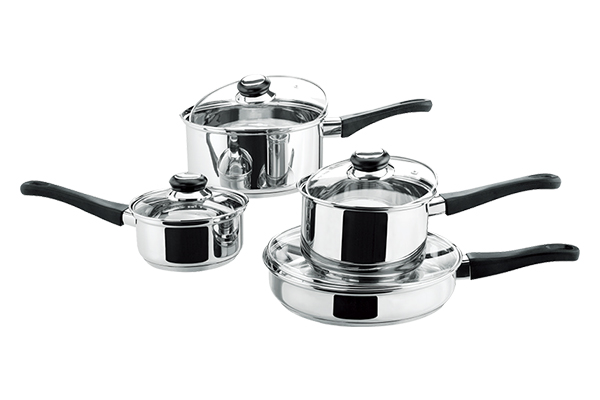Daily cleaning of 304 stainless steel steamer:
1. After cooking, warm water and less cold detergent can be used to thoroughly clean the inside and outside of the stainless steel pot with sponge or cleaning cloth.
2. Choose a cloth with strong water absorption to wipe the pot. The cloth is very easy to use. The effect of wiping water drops is good and time-saving. It can dry the pot quickly without leaving any scurf.
3. If white spots appear on the inner wall of the pot after use, the starch in the food adheres to the surface of the pot wall during the heating process. How to remove: wipe with a little vinegar or lemon slice. If the bottom of the pot appears rainbow color or yellow spot because of cooking, you can squeeze the stainless steel special cleaning emulsion in the dirty area, stay for a few minutes, and wipe it with a slightly wet rag repeatedly.
4. Finally, rinse the pot with water, dry the pot and store it in a dry place.
Precautions when using stainless steel wok:
1.Because the thermal conductivity of stainless steel is small, the heat dissipation at the bottom is slow, and the temperature is easy to be concentrated, the fire power of stainless steel cooker should not be too large, and the heating surface at the bottom should be wide and even as far as possible, so as to save fuel and avoid food burning at the bottom of the pot.
2. Stainless steel pots and pans shall avoid collision with sharp and hard objects, so as to avoid scratches and dents affecting the appearance and sealing performance.
3. After a period of time, a layer of mist will appear on the surface of stainless steel, making the surface of cooking utensils dark. At this time, it can be wiped with a soft cloth stained with dirt powder or detergent to restore the brightness. If the outer surface is blackened by smoke, this method can also be used.
4. When using stainless steel wok, do not let the bottom of the wok have water stains. Especially when it is used on the coal ball furnace, because the coal ball contains sulfur, sulfur dioxide and sulfur trioxides will be produced when it is burned. Once it meets water, it will generate sulphite and sulfuric acid, which will corrode the bottom of the boiler.
